The Mysterious History of George Harrison’s “Mad” Bartell Fretless
'Finding Fretless' Author Paul Brett reveals how his relentless sleuthing uncovered a most unusual Beatles guitar.
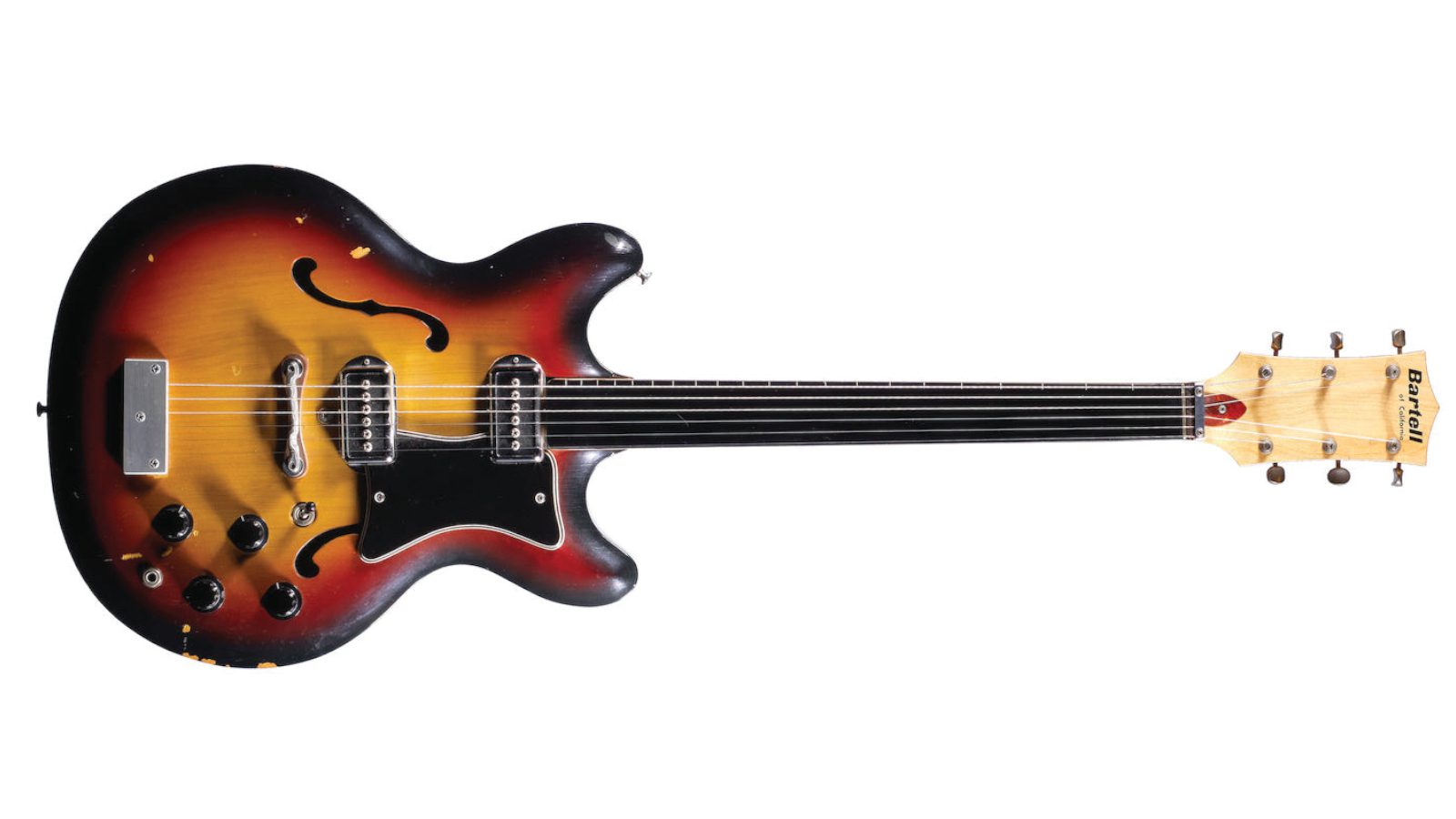
As one of the world’s most famous guitarists, George Harrison was on the receiving end of some stunning and groundbreaking guitars, including a prototype Rickenbacker 360/12 12-string, in 1964, and a prototype Fender Rosewood Telecaster, in 1969.
But as astute Beatles fans learned in recent years, in 1967 Harrison became the recipient of an unusual prototype fretless electric guitar built by the short-lived U.S. Bartell company.
How the guitar came to be, and how Harrison came to own it, are among the subjects explored by British author Paul Brett in his recently published groundbreaking tome, Finding Fretless: The Story of George Harrison’s Mad Guitar (This Day in Music Books).
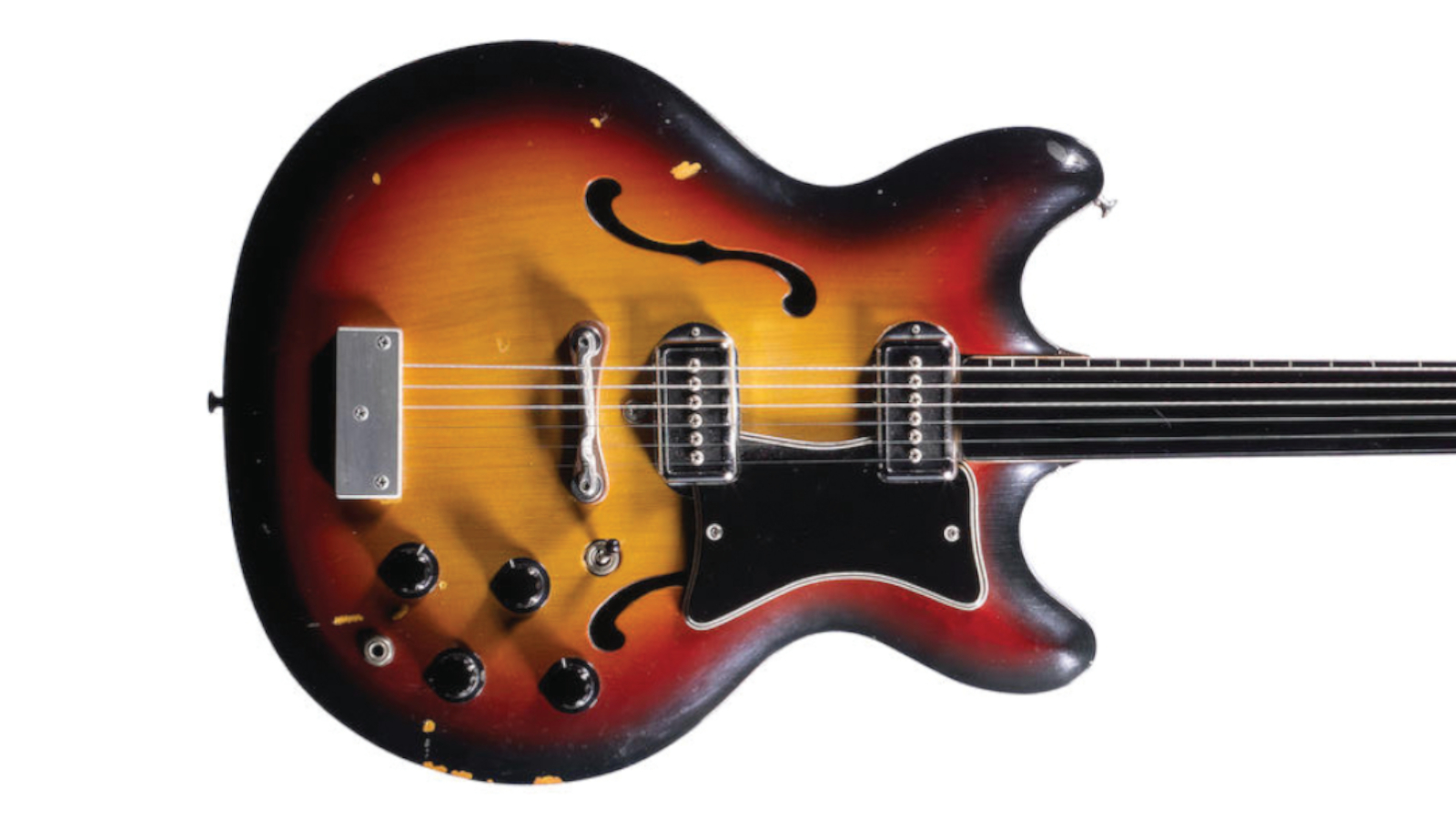
Brett’s interest in the guitar was spurred when his friend, veteran jazz-fusion guitarist Ray Russell, posted a cryptic message to his Facebook page to mark the Beatle’s birthday on February 25, 2019, accompanied by a photo of a fretless guitar.
“He took a little post on Facebook and said, ‘I’m remembering George today. He gave me this old guitar. I don’t know much about it,’” Brett recalls. “That just triggered my interest. It was a Bartell. I’d never heard of it.”
Russell’s post sent Brett on a journey to learn more about both Harrison’s guitar and the Bartell brand, whose venture into fretless guitars in the 1960s is among the guitar world’s most unusual evolutionary branches.
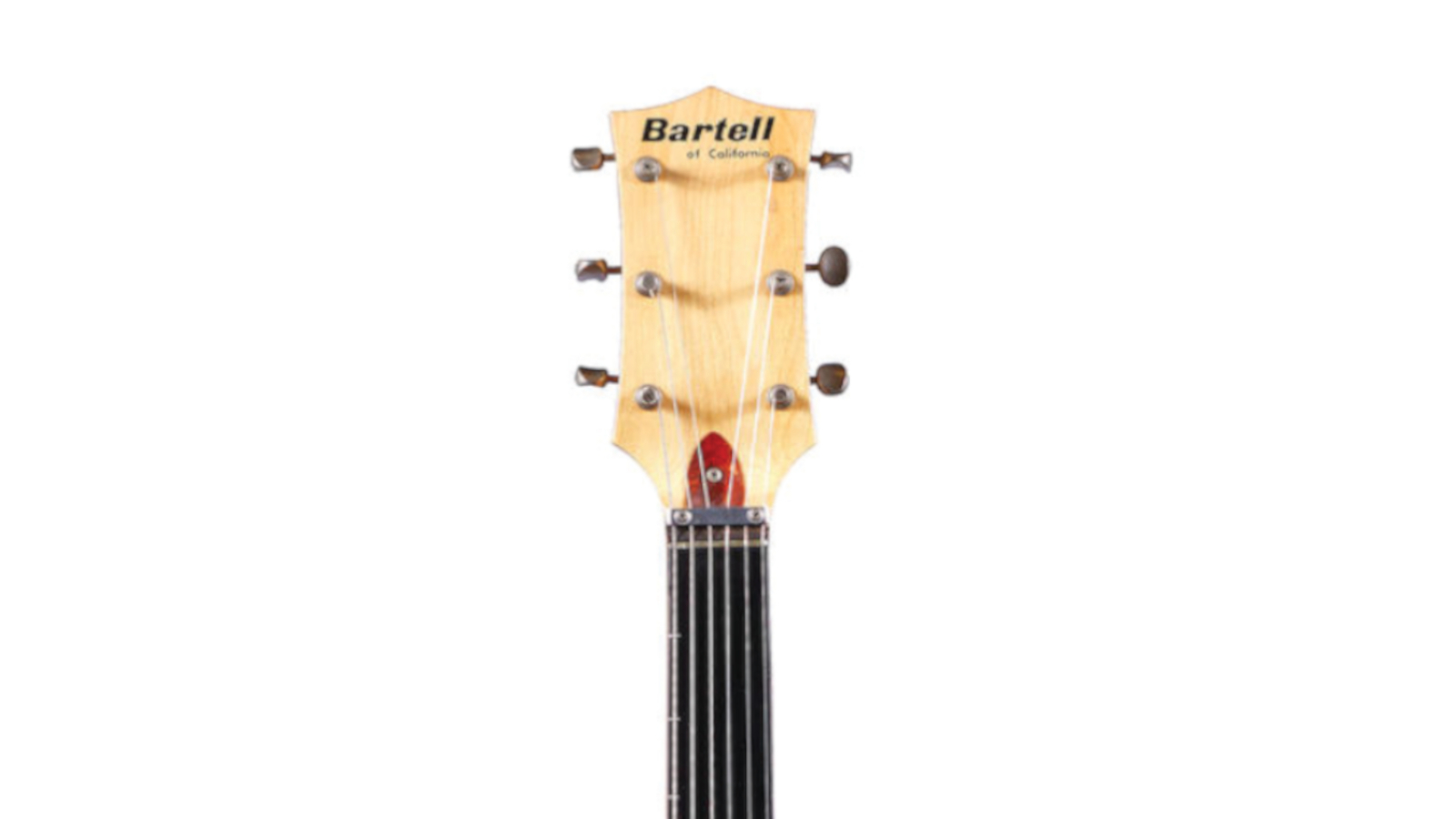
At the heart of the story is Paul Barth, one of guitar’s unsung heroes. “People don’t talk much about Paul Barth,” Brett says, “but he was really one of the founding fathers of the electric guitar.”
All the latest guitar news, interviews, lessons, reviews, deals and more, direct to your inbox!
Barth’s introduction to the guitar industry came in the early 1920s, when he went to work for his uncle John Dopyera, inventor of the resonator guitar, at the National String Instrument Corporation. By the 1930s, Barth was working with George Beauchamp at Rickenbacker, collaborating with him on the Frying Pan electric and Beauchamp’s design for a guitar pickup.
In the early 1950s, he helped Leo Fender set up his Santa Ana assembly line and built many of the woodworking jigs from which necks and bodies were shaped for Stratocaster, Jazzmaster and Jaguar model guitars.

His work even extended to Semie Moseley at Mosrite as well as Magnatone and Hohner.
He launched his own Barth guitar brand in 1956, and in 1964 the Bartell company was created by owner and company president Ted Eugene Peckels and Barth, who served as director and head of design. The Bartell name was derived by combining Barth’s and Peckels’ surnames.
It was Tom Mitchell, a paint finisher at Bartell – he went on to create Mitchell Amplifiers – who suggested the company make a fretless guitar, around 1966 or 1967.
Paul Barth, being a designer and inventor, said, ‘Yeah, let’s give it a go and see what happens'
Paul Brett
“Ted Peckels said, ‘That’ll never take off,’” Brett relates. “But Paul Barth, being a designer and inventor, said, ‘Yeah, let’s give it a go and see what happens.’”
A few prototypes were made, including two for Jimi Hendrix and one that Frank Zappa acquired in 1973 from a Guitar Center in California. How Harrison came to own one required some serious sleuthing on Brett’s part.
A vital lead came from his friend Richard Bennett, a guitarist with plays with Neil Diamond and Mark Knopfler, who owned a Bartell as his first guitar.
Bennett related a story about Al Casey, the owner of Al Casey’s Music Room retail outlet in Hollywood, sending a Bartell fretless to Harrison when the Beatle was staying at 1567 Blue Jay Way in Los Angeles in 1967.
The home is famous as the place where Harrison wrote “Blue Jay Way,” the haunting track from 1967’s Magical Mystery Tour, while waiting for the arrival of Beatles press officer Derek Taylor, who’d lost his way in the fog.
While browsing the internet hoping to find a photo of the Beatles with the fretless guitar, Brett entered “Al Casey Bartell fretless” into a search engine and was rewarded with a vintage print ad for Al Casey’s Music Room.
“You must have heard about them by now, so come on in and see the Bartell fretless guitars and fretless basses,” went the ad copy. Below the call to action was a cryptic parenthetical: “George Harrison got the first guitar, maybe if you hurry you can get the second one.”
The ad ran in The Los Angeles Free Press from the first week of September 1967, lending support to Bennett’s story.
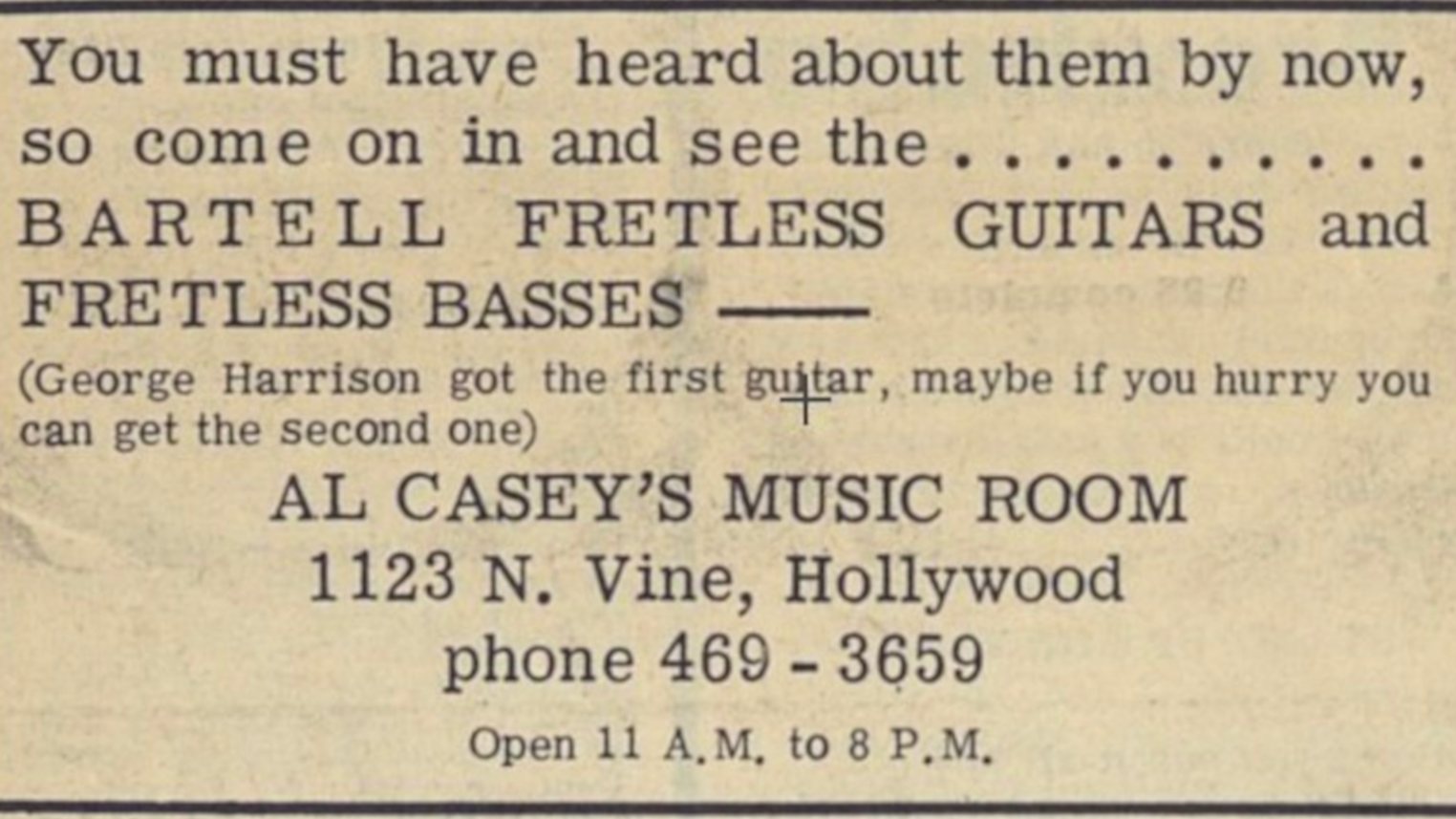
Brett then learned that on August 3, while in Hollywood, Harrison and Beatles assistant Neil Aspinall attended a recording session where guitarist Mike Deasy was playing one of Bartell’s prototype hollow-bodied fretless guitars.
Harrison spoke with Deasy about the instrument for 20 or 30 minutes before leaving. Afterward, Aspinall reportedly ordered a fretless guitar from Al Casey.
It’s certain that the Bartell fretless made it to Abbey Road Studio. The guitar is documented in Beatles history through British DJ Kenny Everett’s recorded interview with John Lennon.
Their chat took place at Abbey Road Studio on June 6, 1968, shortly after the Beatles began recording the White Album. Lennon is playing the guitar, which can be heard on the recording. “What kind of guitar is that?” Everett asks at one point. “Very strange looking.” Replies Lennon, “A fretless guitar.”
“We know it was the Bartell, ’cause it’s the only one they had,” Brett says. From talking with others who knew Harrison, he learned that Lennon was more intrigued by the guitar than Harrison was. “He was more likely to pick it up and mess around with it when they were looking for a particular sound or effect.”
But was the fretless guitar ever used on a recording by the Beatles?
No documentation exists to support the notion, but Brett and others familiar with the tonal character of the instrument are convinced it appears on two White Album tracks: “Happiness Is a Warm Gun,” where Brett believes it was used to perform the rubbery descending lick that precedes the lyric “I need a fix ’cause I’m going down”; and “Helter Skelter,” where it would have been used along with other guitars.
Brett says the sound of a fretless guitar is present and more apparent on the second take of “Helter Skelter,” a version clocking in at 12 minutes and 54 seconds, some four and a half minutes of which appear on Anthology 3.
“The suggestion is that it may have been used on others, mainly for overdubs, not as the lead guitar or the main instrument,” he says. “But you can certainly pick it out, because it is so unique.”
You can certainly pick it out, because it is so unique
Paul Brett
Brett points to an absence of the bright tone that comes from the strings vibrating against a metal fret. “I think George called it ‘fret sparkle,’” he says. Likewise, slides and bends sound different due to the absence of frets.
Brett also notes the microtonal characteristics of intonation that come from imperfect fretboard fingering. “The fact that it was a hollowbody guitar as well adds a bit to [the distinctive sound],” he says. “And I’m hearing the pickups – they weren’t great for volume as such.”
Though his research had proved where and how Harrison received the guitar, Brett was frustrated that he could find no photo of the instrument among pictures of the Beatles. But eventually his painstaking efforts paid off.
“It took me months of searching through tens of thousands of photos,” he says. “And there we had it: George Harrison at home with his collection of guitars.” The photo, taken some time in the 1970s, shows Harrison in a room at his Friar Park estate surrounded by mostly acoustic guitars. “And there it is right at the back next to him,” Brett reveals.
It took me months of searching through tens of thousands of photos
Paul Brett
Harrison gifted the guitar to his friend Russell in 1985. In March 2020, it was featured on Antiques Roadshow, where it was valued at £400,000. Under the circumstances, Russell was unprepared to own and maintain an instrument of such value.
On October 13, 2020, this least-famous Beatles guitar went on Bonhams’ auction block, where it fetched a more conservative, but no less impressive, bid of £190,000 – roughly a quarter of a million dollars.
Brett’s dogged efforts have helped unearth yet another piece of Beatles history, but what tends to get overshadowed in the story is how Finding Fretless shines light on a previously unexplored tract in guitar history through research and stories about Barth, Bartell and other fretless guitars and their owners.
For his contributions, Brett has been nominated by the Association for Recorded Sound Collections Awards (ARSC) to receive its 2022 award for Excellence in Historical Recorded Sound Research.
NAMM has also asked him to contribute to its oral history program when he’s in Anaheim for the annual musical instrument show next month.
“We’re hoping to have a reunion of Bartell while we’re there,” Brett says, “and give Paul Barth some of the recognition he deserves.”
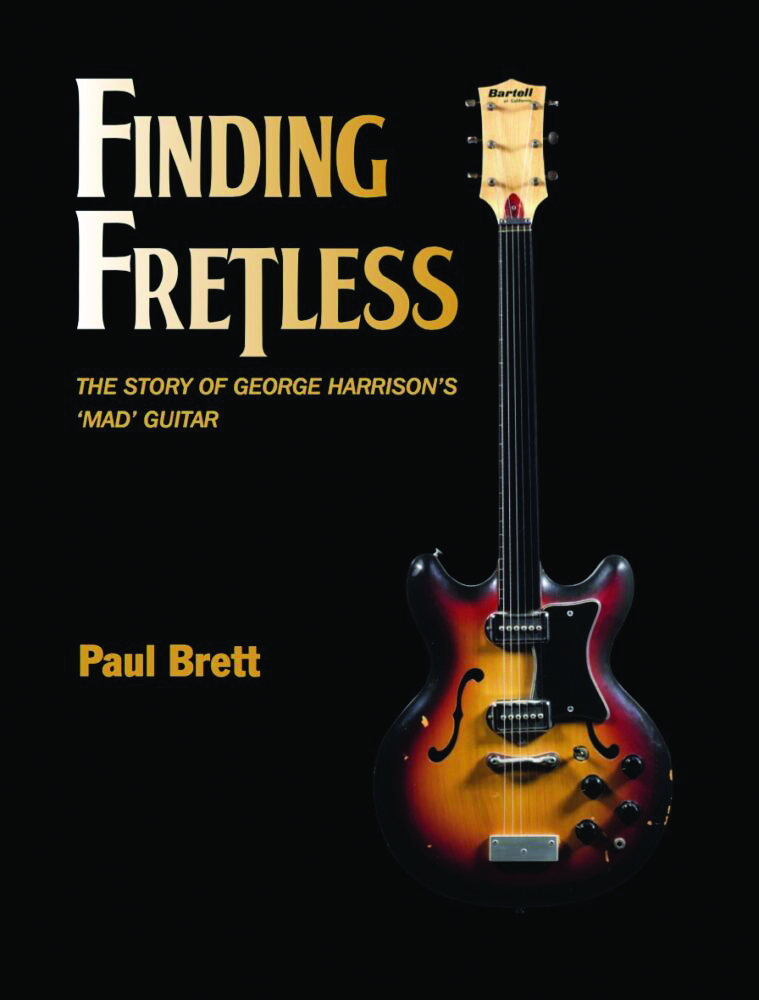
Order Finding Fretless: The Story of George Harrison’s Mad Guitar by Paul Brett here.
Christopher Scapelliti is editor-in-chief of GuitarPlayer.com and the former editor of Guitar Player, the world’s longest-running guitar magazine, founded in 1967. In his extensive career, he has authored in-depth interviews with such guitarists as Pete Townshend, Slash, Billy Corgan, Jack White, Elvis Costello and Todd Rundgren, and audio professionals including Beatles engineers Geoff Emerick and Ken Scott. He is the co-author of Guitar Aficionado: The Collections: The Most Famous, Rare, and Valuable Guitars in the World, a founding editor of Guitar Aficionado magazine, and a former editor with Guitar World, Guitar for the Practicing Musician and Maximum Guitar. Apart from guitars, he maintains a collection of more than 30 vintage analog synthesizers.
